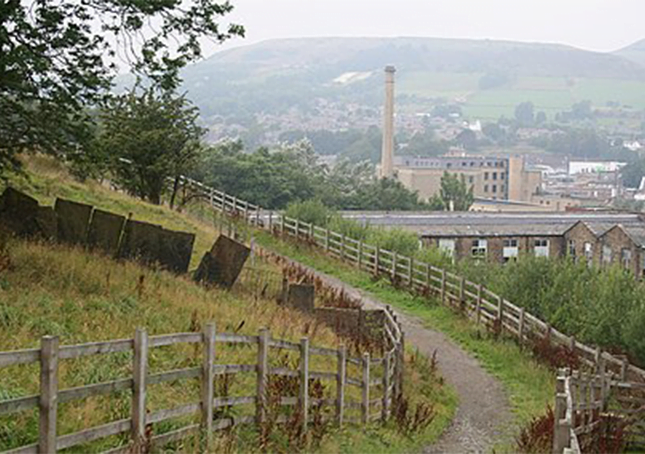Rossendale Valley

The Rossendale Valley is in the Rossendale area of Lancashire, England, between the West Pennine Moors and the main range of the Pennines. The area includes the steep-sided valleys of the River Irwell and its tributaries (between Rawtenstall and Bacup), which flow southwards into Greater Manchester. The rivers cut through the moorland of the Rossendale Hills, generally characterized by open unwooded land, despite the ancient designation of “forest”.
One of the earliest sites of historical interest in the valley is that of the dykes at Broadclough, which are associated with the Battle of Brunanburh.
In late Middle Ages, the valley was part of the Royal Forest of Rossendale. The original medieval meaning of ‘forest’ was similar to a ‘preserve’, for example land that is legally kept for specific purposes such as royal hunting. So ‘forests’ were areas large enough to support species such as wolves and deer for game hunting and they encompassed other habitats such as heaths, open grassland and farmland, so not necessarily extensively wooded.
Initial settlement would have been in “booths” or farmsteads and encroachment into the forest would have developed them into small hamlets.
Rossendale was governed by a constable nominated by principal landowners who held the position of “The Greave of The Forrest” which after 1515 became a quasi-hereditary position held by the Whitacker family at the only ancient hall in the district: Broadclough Hall.
In 1507 the land in the Forest of Rossendale was demised to copyhold farmers and a new church was established on the hillside at Seatnaze around 1511, presumably considered a convenient location for the population at that time.
In 1789 an act authorised the construction of new Turnpike trust roads through the district, connecting Bury and Haslingden with Blackburn and Whalley, with a junction at Haslingden to Todmorden via Oakenheadwood, Newchurch, Stacksteads and Bacup. In 1826 the Haslingden and Todmorden trust built another new road along the valley bottom, from Stacksteads through Thrutch, Rawtenstall and Newhall Hey.
By 1848 a number of woollen and cotton mills had been established along the river.[7] And by the late 19th century it was the valley bottom that had become the population centre.
In 1889, the short-lived Rossendale Valley Tramways Company was established to operate a route between Bacup and Crawshawbooth via Rawtenstall. In 1908 the route was taken over by Rawtenstall Corporation Tramways.
